Key takeaways
- A musician’s portfolio should include high-quality samples, a compelling bio, and visual aesthetics that reflect their unique style.
- Choosing a quality recording studio is crucial for creativity and sound quality; factors like atmosphere, equipment, and staff expertise greatly influence the recording experience.
- Researching potential studios and engaging in direct communication with staff can provide valuable insights and shape your decision-making process.
- Trusting your instincts about a studio’s vibe and considering its location and pricing structure are essential when making a final selection.
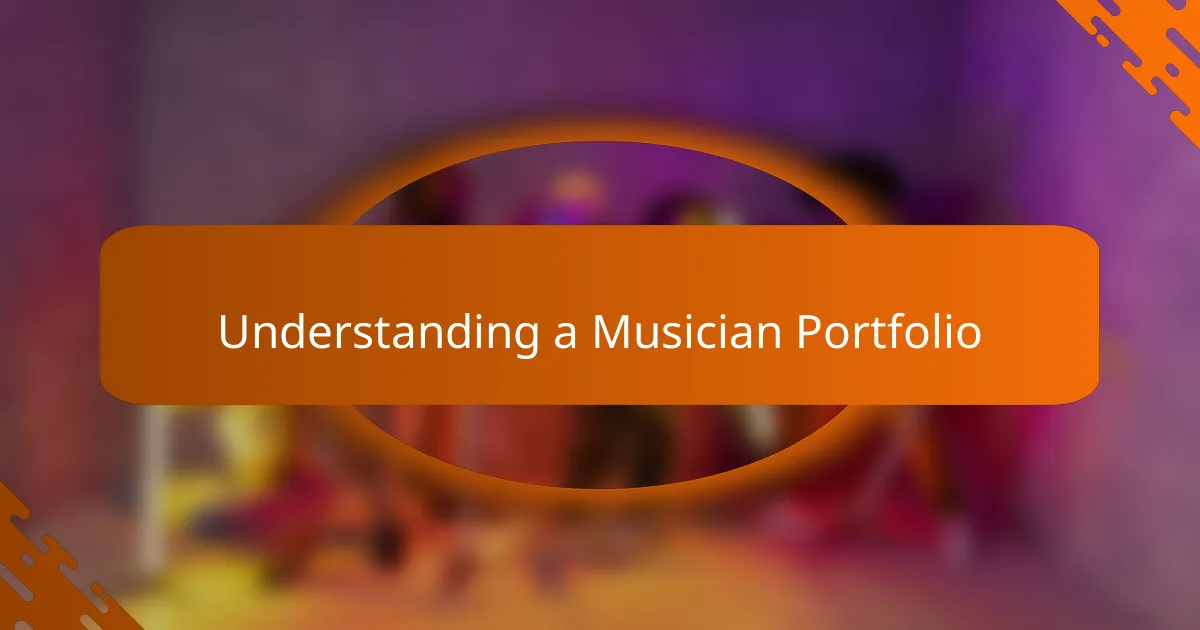
Understanding a musician portfolio
Understanding a musician portfolio is essential for showcasing your unique style and talent. In my experience, it’s not just about listing your work; it’s about telling a story through your music and the visuals you choose. I remember when I first curated my own portfolio, it felt like laying my soul bare for the world to see.
When putting together your portfolio, consider these vital components:
- High-Quality Samples: Include a variety of your best tracks to demonstrate your range.
- Visual Aesthetic: Use visuals that reflect your music style, evoking emotions that complement your sound.
- Bio: Share your musical journey, highlighting key experiences and influences.
- Contact Information: Make it easy for potential collaborators and clients to reach out to you.
- Social Proof: Incorporating testimonials or endorsements can add credibility to your portfolio.
Each element contributes to creating a holistic representation of who you are as an artist.
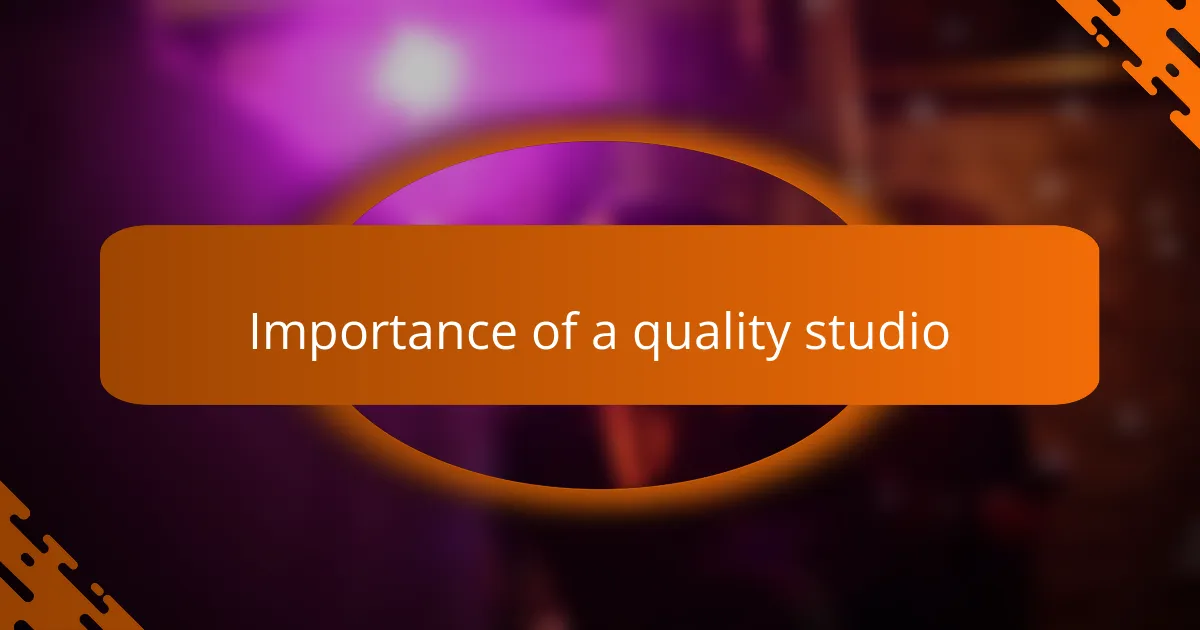
Importance of a quality studio
When it comes to choosing a studio for recording, quality can make all the difference. I remember stepping into a poorly-equipped space and feeling the constraints of its limitations. The sound was muffled, and it didn’t inspire creativity. Think about it: if the studio environment doesn’t match your artistic vision, how can you expect to produce your best work?
A quality studio is an investment in your art. The right equipment, acoustics, and engineering can elevate a mediocre track into something exceptional. I’ve experienced this firsthand—working with skilled sound engineers can turn an idea into a polished masterpiece. It’s like having a good co-pilot on a journey; their expertise guides you to your destination much more effectively.
Moreover, a well-equipped studio can foster a collaborative spirit. I’ve found that being surrounded by professionals who are passionate and dedicated pushes me to reach new heights. Isn’t it empowering to know that you’re not just a musician, but part of a creative team that shares your goals and aspirations? The atmosphere alone can inspire breakthroughs that fundamentally shape your music.
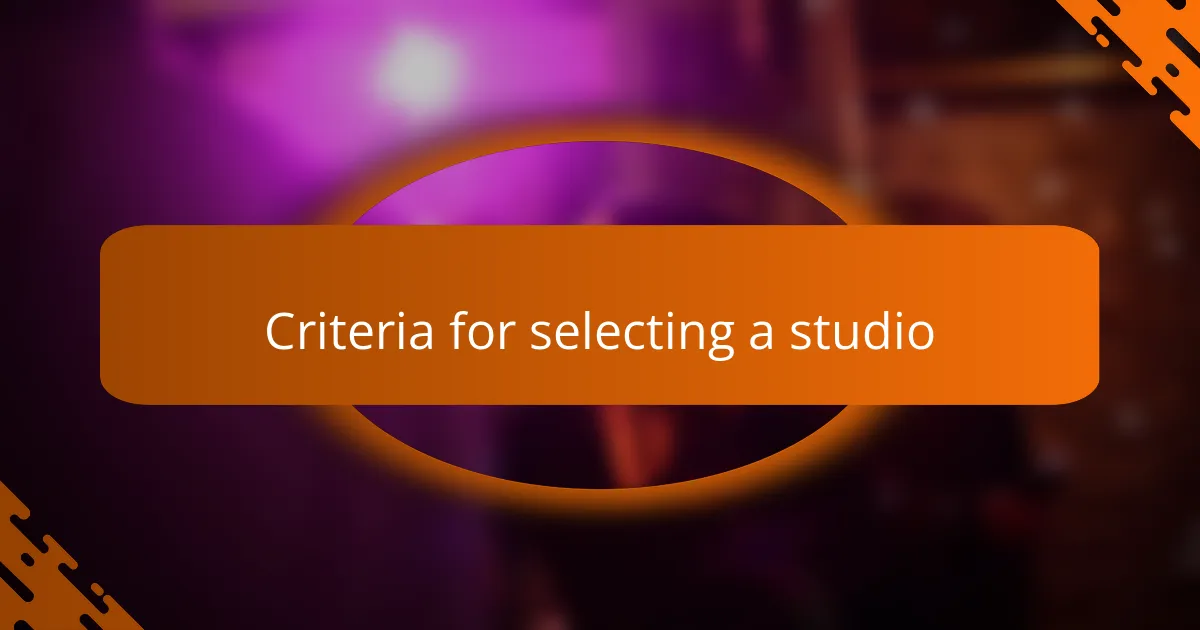
Criteria for selecting a studio
When selecting a studio, I believe it’s essential to consider the atmosphere, equipment quality, and the expertise of the staff. I remember a time when I walked into a studio that felt welcoming, with a cozy vibe that instantly put me at ease. Not only did the top-notch gear impress me, but the engineer’s willingness to collaborate made the recording experience much more enjoyable and productive.
Another critical criterion is the studio’s location and accessibility. I once chose a studio that was a bit out of the way, thinking the price was right. While the quality was worth it, I often found myself struggling with the commute.
Here’s a comparison table summarizing important criteria for selecting the right studio:
| Criteria | Importance |
|---|---|
| Atmosphere | Creates comfort and ease |
| Equipment Quality | Affects sound excellence |
| Staff Expertise | Guides the creative process |
| Location | Impact on convenience |

Researching potential studios
Researching potential studios is a crucial step in my creative process. I remember spending countless evenings browsing online directories and social media, looking for studios that resonated with my musical style. It was fascinating to see how different studios presented themselves, and I found myself drawn to those with an authentic, personal touch in their marketing.
Once I found a shortlist of studios, I made it a point to check out reviews and testimonials from other artists. It felt reassuring to read about others’ experiences, especially how certain studios fostered creativity and collaboration. I often asked myself, what do I want from a studio? Identifying my goals helped me determine which places aligned with my vision and vibe.
I also reached out directly to studio owners and staff, sometimes through simple inquiries about their available equipment or their approach to artist collaboration. Those conversations provided invaluable insights. I recall a particular studio where the owner was so passionate about music. That enthusiasm made me feel excited about potentially recording there. It’s amazing how initial interactions can shape your perception and confidence in a studio choice.
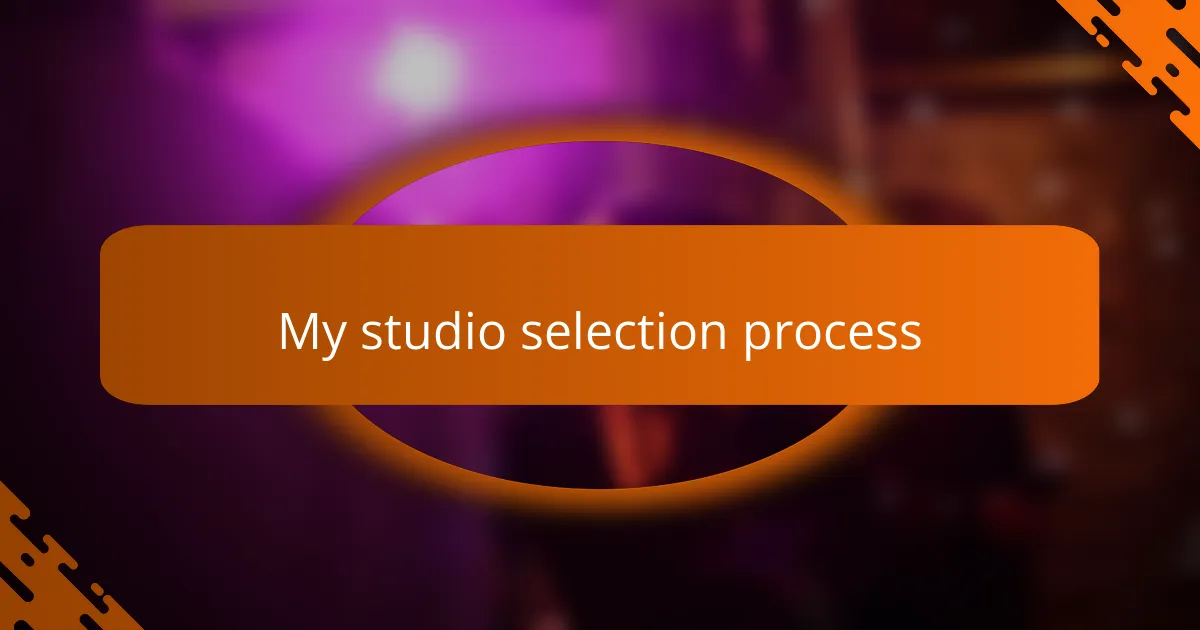
My studio selection process
Choosing the right studio is an adventure in itself. I often start by visualizing the sound I want to create and considering which studios align with that vision. One time, I visited a studio that felt like stepping into my imagination—every detail, from the walls to the equipment, resonated with my artistic identity and sparked ideas.
I also think about my vibe as an artist. There was a studio I researched, and what struck me was not just the impressive gear, but the testimonials from other musicians about the nurturing atmosphere. It made me wonder, how important is it to feel at home where you create? For me, it’s everything. That feeling of comfort leads to genuine creativity.
Finally, I always trust my instincts after visiting a studio. I vividly recall a moment in one studio where I chatted with the sound engineer, who was eager to understand my vision. That connection solidified my choice. Can you really put a price on the synergy that comes from being in the right space with the right people? For me, it’s priceless.

Key factors in my decision
When selecting the right studio, I found that the personalities of the engineers and producers were just as crucial as the equipment they used. I remember walking into one studio where the atmosphere felt welcoming; the staff genuinely wanted to understand my vision. This positive energy can significantly impact creativity and productivity during recording sessions.
Another factor that influenced my decision was the studio’s location. I wanted a space that wasn’t just accessible but also inspiring. I recall visiting a studio situated near a beautiful park. The surroundings sparked my creativity and made the sessions feel less like work and more like an enjoyable experience.
I also had to consider the studio’s pricing structure. While I was tempted to choose a more budget-friendly option, the quality and experience I found at a higher-priced studio ultimately justified the investment. Sometimes, you really do get what you pay for.
| Factor | Details |
|---|---|
| Engineer/Producer Personality | Creates a positive creative environment |
| Location | Inspires creativity and ease of access |
| Pricing Structure | Quality experience justifies higher costs |
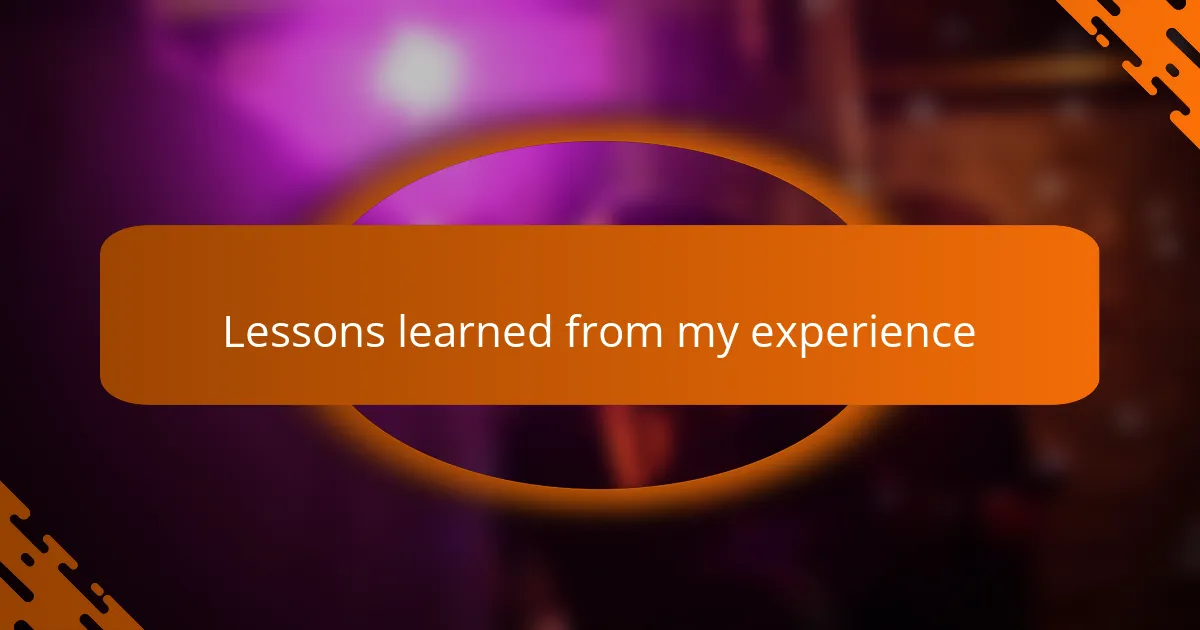
Lessons learned from my experience
Selecting the right studio was a journey filled with both excitement and uncertainty. I learned that communication is key; the more open I was about my vision, the better the studio team understood my needs. One studio I considered initially seemed perfect on paper, but once I visited, their approach felt too commercial for my style.
Another crucial lesson was to trust my instincts. I remember walking into a studio that had an incredible vibe, and I just felt at home. It’s amazing how the atmosphere can impact creativity; I felt more inspired in spaces that resonated with my musical identity.
Finally, budgeting played a significant role in my decision-making process. While I wanted the best, I realized the most expensive option isn’t always the best fit for my creative goals. Balancing quality with affordability became an essential part of my selection process.
| Aspect | Considerations |
|---|---|
| Communication | Open dialogue for clarity and vision alignment |
| Instincts | Trust your gut feeling about the studio environment |
| Budget | Find a balance between quality and what you can afford |